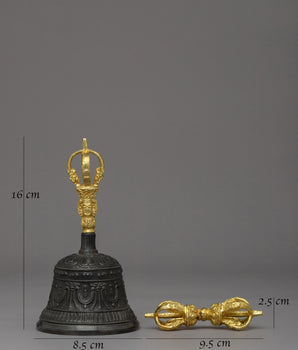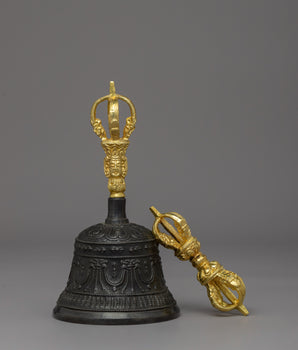










Wrathful Deity Phurba - Yak Bone Ritual Dagger
Sacred Tibetan Wrathful Deity Phurba | Meditation Tool
--------------------------------------------
Size: 31.5cm (Height) x 14cm (Width)
Weight: 0.470kg
Materials: Ethically Sourced Yak Bone
--------------------------------------------
About The Ritual Item :
Accept the strength and fierce protection of the Handcrafted Wrathful Deity Phurba, a genuine Tibetan ritual tool made from ethically harvested yak bone. This enormous Phurba, 31.5cm tall and 14cm broad, is carefully carved to reflect the powerful presence of the wrathful deity, embodying the force required to defeat bad energy and spiritual impediments. The detailed features, such as the furious facial expressions and symbolic inscriptions, depict strength and protection. The skull base depicts the transformation of ignorance, whilst the triple-sided blade represents cutting through delusion, want, and hatred.
This Vajrakila Phurba is a spiritual relic and a potent meditation instrument utilized in Vajrayana Buddhism to balance and harmonize energies. With its yak bone material and traditional Tibetan craftsmanship, this sculpture is a rare and significant addition to any altar, meditation room, or spiritual collection. Use this ritual dagger for meditation, ceremonies, or as a protective symbol in your holy area. The wrathful deity represents courage and inner power, supporting practitioners on their spiritual journey while protecting them from bad influences. This Phurba is ideal for individuals seeking spiritual growth and represents the profound Tibetan Buddhist philosophy.
Introduction To The Phurba :
The ceremonial dagger (Sanskrit: Kila; Tibetan: phurba) is essential for expelling evil and is considered particularly effective in neutralizing the forces obstructing Tantric Buddhist practice. It has ancient origins, first appearing in the Indian Rig Veda as the core blade of the vajra used by Indra to destroy the primordial cosmic snake Vritra. Kila, derived from Sanskrit, was most likely associated with Vedic sacrifices. Meditation on the Vajrakila Tantra, an early Indian scripture first promoted in Tibet in the eighth century by Padmasambhava, one of the founding teachers of Tibetan Buddhism, is used to invoke the three-headed Vajrakila Buddha.
How to Set Up Your Buddhist Shrine?
Find a clean, quiet, and uncluttered spot.
Please set up an altar table and cover it with an altar cloth that calls to you.
Place your sacred item (statue, thangka, or a picture of Buddha) at the center.




















